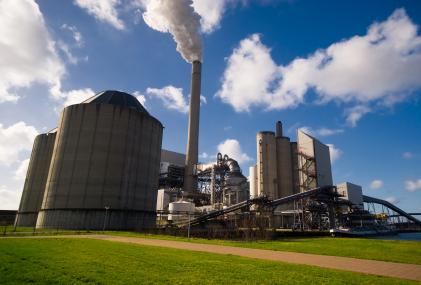
In my last article, I pointed out how the Intergovernmental Panel on Climate Change (IPCC) is improving its methods and research, and getting closer to proving the effects of man’s current lifestyle on the climate of our planet. Climate deniers, however, remain steadfast in their convictions that the IPCC’s science is wrong or that it’s all just a scam to increase government power. The fact that they have no proprietary research to substantiate their claims that rising CO2 levels are harmless or that human beings have nothing to do with it, doesn’t seem to stop them picking holes in the science.
To move this debate on, it is important, therefore, to examine the phenomenon of climate sensitivity, which is a major bone of contention between scientists and deniers. In a nutshell, climate scientists believe the earth’s climate to be highly sensitive to CO2 emissions and deniers less so (no surprise there). But determining how much the planet’s temperature is rising because of the increase in CO2 goes a long way to settling this debate, which is why I’m dedicating an entire article to it here.
The main question we have to deal with is how much the average global temperature of earth, in equilibrium, will rise in response to “radiative forcing” by excess heat arriving at the earth’s surface.
Radiative forcing is the difference between sunlight absorbed by the earth and the energy radiated back to space. The mechanism that controls this phenomenon is the well-known “greenhouse effect”, where the CO2 in the atmosphere absorbs radiation reflecting from the earth’s surface back toward space and re-radiates it back to earth, like a blanket.
Climate scientists currently think that increasing CO2 in the atmosphere is strengthening this blanket and raising global temperatures.
Amplifying effects
As with most things in the complex climate, this has multiple implications. One immediate effect would be increased photosynthesis and more biomass accumulation (partly from CO2 fertilisation), more evapotranspiration, and more water vapour in the atmosphere. (Water vapour is the most potent of all the greenhouse gases.) This is now thought to be a positive (amplifying) feedback, although one respected climate scientist (Richard Lindzen of MIT) postulates a negative feedback. However, Lindzen’s “Iris hypothesis”, concerning clouds, has not been verified by tests.
A second fairly immediate effect of warming would be to melt some of the snow-cover in the Arctic and Antarctic, thus decreasing the reflectivity (albedo) of the Earth and increasing heat absorption by the oceans. Warming of the atmosphere will accelerate the melting of mountain glaciers and further increase the evaporation of water from the warmer oceans. This is happening.
A third consequence is that as the ocean warms up, it expands. This thermal expansion results in sea level rise. Moreover, (due to warming) the ocean keeps less carbon dioxide in solution. But a warmer ocean will dissolve progressively less CO2, thus keeping more of the excess CO2 in the atmosphere. This so-called “carbon-cycle feedback” has different consequences in different general circulation models. This is still a contentious issue. Currently it is estimated that 57 percent of new CO2 emissions are dissolved in the oceans. This results in increased acidity, which is especially harmful to shellfish and coral.
In a steady state equilibrium condition, the first law of thermodynamics (conservation of energy), says that energy inflows from the sun to the Earth in the form of short-wave (SW) light must be balanced in the long run (but not at every moment) by energy outflows in the form of low temperature (infrared) heat or long-wave (LW) light. If there is no balance, the Earth must either warm up or cool down. Currently, the LW energy outflow is less than the SW inflow, due to the Greenhouse Effect. The climate of the Earth is now changing in response to the imbalance.
There are natural systems such as glaciers, forests and deep water that can accelerate or slow down the climate changes. Many of these processes are cyclic, with daily, lunar monthly, annual or even longer periodicity. For instance, ice ages appear to be periodic, with very long cycles. Hence climatic comparisons between now and earlier times in the Earth’s history must be made with extreme care to allow for such cyclic phenomena.
The climate sensitivity of Earth, which is the amount of excess heat needed to raise the Earth’s temperature, on average, by 1°C, turns out to be 3.7 watts per square meter (or 3.7 megawatts per square kilometre) of surface. It follows from simple arithmetic that increasing the greenhouse gas (CO2 equivalent) concentration from 180 ppm, as it was back in the glacial maximum period to 280 ppm as it was around the year 1800 would be the equivalent of increasing the solar power input at the top of the atmosphere by about (180/280) × 3.7 = 2.37 watts/m2. That, in turn, would have raised the Earth’s temperature by about 0.64°C.
But since the glacial maximum 100,000 years ago, the global average temperature has actually increased by around 5°C. (The calculation is not accurate enough to estimate a more precise range of error.) Assuming this difference can be attributed to the increase in carbon dioxide concentration in the atmosphere, there must be a large amplification factor, due to positive “feedbacks” in the system. In short, the amplification factor seems to be roughly 5/0.64 = 7.8. However, the IPCC climate scientists are currently assuming a much lower amplification factor, between 3.1 and 4.5. Far from exaggerating the threat, they may be underestimating it.
Evidently, there is still an unexplained gap between these feedback corrections and the amplification factor of 7.8 calculated above from historical climate data. The difference between the feedbacks explicitly accounted for by the general circulation models currently used by the IPCC and the factor of 7.8 would have to reflect other feedbacks not yet explicitly taken into account in the models.
One possible effect, not yet taken into account, might be to alter the “conveyor belt” of surface and deep ocean currents. For example, this might cause the warm, salty Gulf Stream to abort its northward passage on the surface, and sink prematurely. This could be due to cooling and dilution by melting Greenland ice, plus increased salinity due to salt release from the melting of Arctic Sea ice. Increased salinity makes the water denser and causes it to sink sooner than it does now. (Perhaps this was the cause of the “Little Ice Age”?) This rise in salinity may have happened in the past, during the rapid melting of the Wisconsin Glacier. If something like this were to happen again, northern Europe could be cooled as a direct consequence of general global warming.
What happens to the atmosphere has a big impact on the oceans which are by far the main storage system for heat in the short-to-medium term, having absorbed 93 percent of the increase in global heating between 1971 and 2010, according to the IPCC. But the capacity of the oceans to continue absorbing heat is most likely to result in thermal expansion, which causes sea levels to rise. In my next and final post, we will look at the oceans in isolation and the many implications of their own rising temperatures.
Bob Ayres is an Emeritus Professor of Economics and Political Science and Technology Management at INSEAD and The Novartis Chair in Management and the Environment, Emeritus. He is the author of The Bubble Economy: Is Sustainable Growth Possible? and co-author of Crossing the Energy Divide: Moving from Fossil Fuel Dependence to a Clean-Energy Future
Follow INSEAD Knowledge on Twitter and Facebook.
-
View Comments
-
Leave a Comment





No comments yet.